Doc Snyder’s House 1931
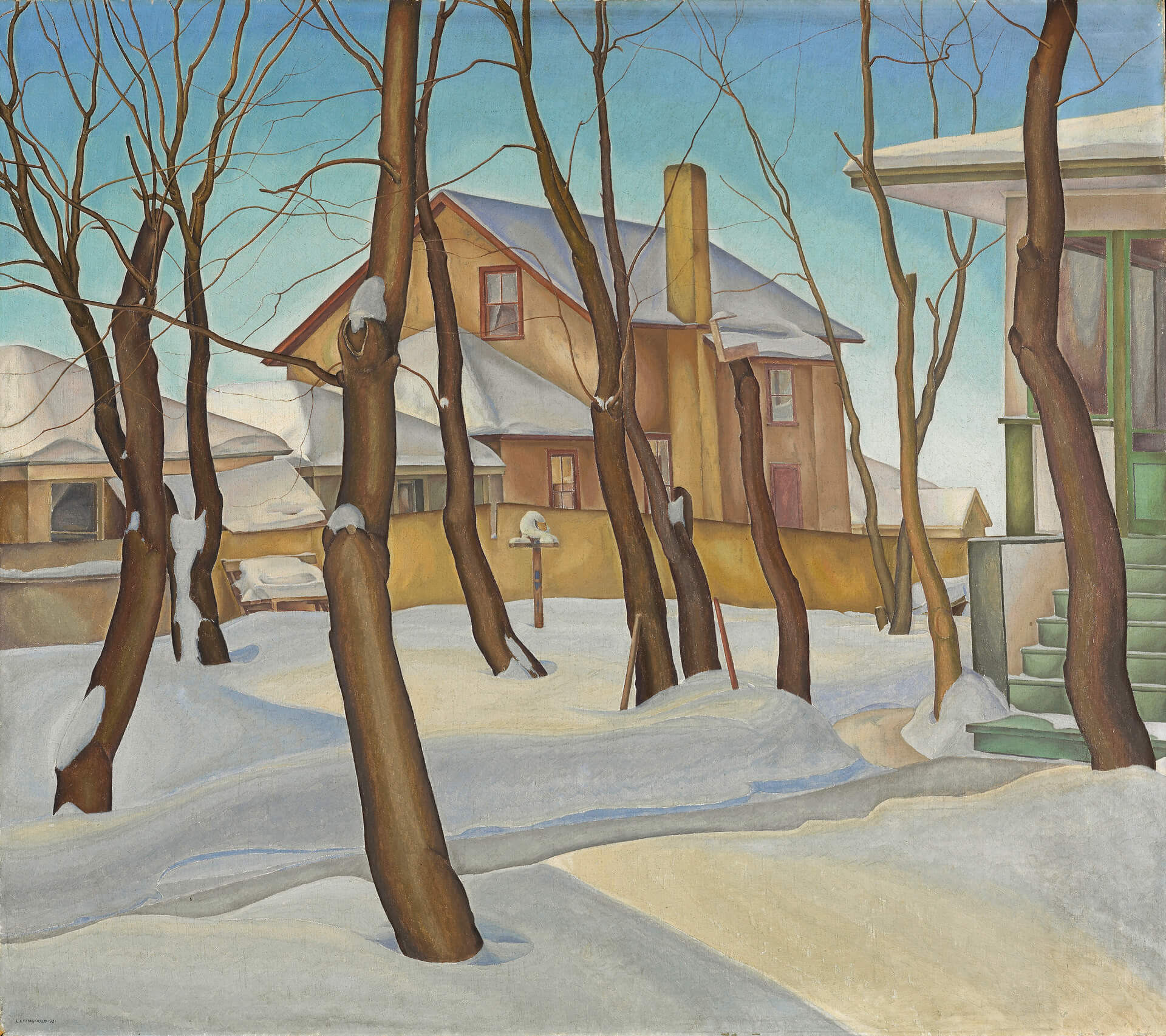
Lionel LeMoine FitzGerald, Doc Snyder’s House, 1931
Oil on canvas, 74.9 x 85.1 cm
National Gallery of Canada, Ottawa
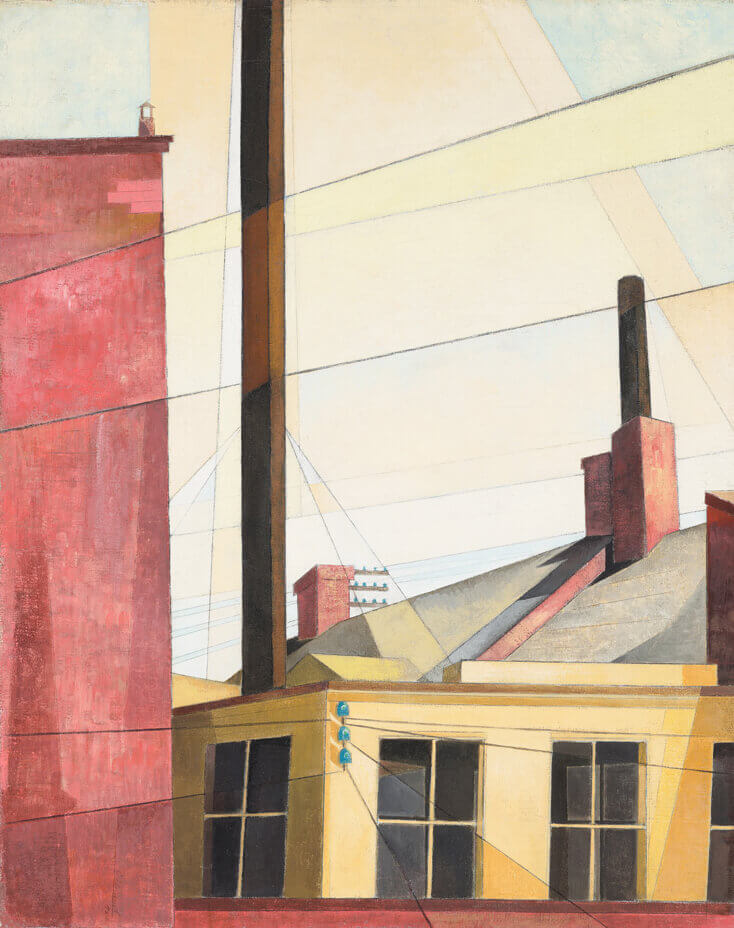
As FitzGerald was about to turn forty, he reached a level of artistic excellence that gave rise to a series of accomplished oil paintings through the first half of the 1930s. This period, which had begun with the completion of Williamson’s Garage, 1927, reflects how he had absorbed the lessons learned from the American Precisionists some years earlier. At the March 1922 Wanamaker Gallery exhibition in New York, FitzGerald would have likely seen From the Garden of the Chateau, 1921 (reworked 1925) by Charles Demuth (1883–1935). From this picture he would have observed how Demuth could crop and pare down his subject to its structural essentials, a basic geometry of hard-edged forms and shadows. But FitzGerald was about to move beyond this early artistic influence and elevate his work to new heights with a highly original painting that would take him a year and a half to complete and be recognized by many as the masterwork of his career.
Looking once again into his own backyard for a subject, FitzGerald probably began Doc Snyder’s House in December 1929 and completed it around June 13, 1931. With this painting, the artist immortalized the residence of Dr. Victor Snyder, a Winnipeg dentist who lived at 152 Lyle Street, a few doors from FitzGerald’s home at 160 Lyle Street. Doc Snyder’s House is an excellent example of the extraordinary intensity that FitzGerald brought to his working process. “I demand a great deal, in either a drawing or a painting, of myself, being satisfied with only what I feel is the best I can produce at the time, with the result that I work very slowly and [take] a long period over each work. ‘Doc Snyder’s House’ represents two winters, including two full weeks each Christmas vacation as well as all weekends. I can[’]t go home Saturday and by Monday morning have a canvas completed as seems possible to so many others.”
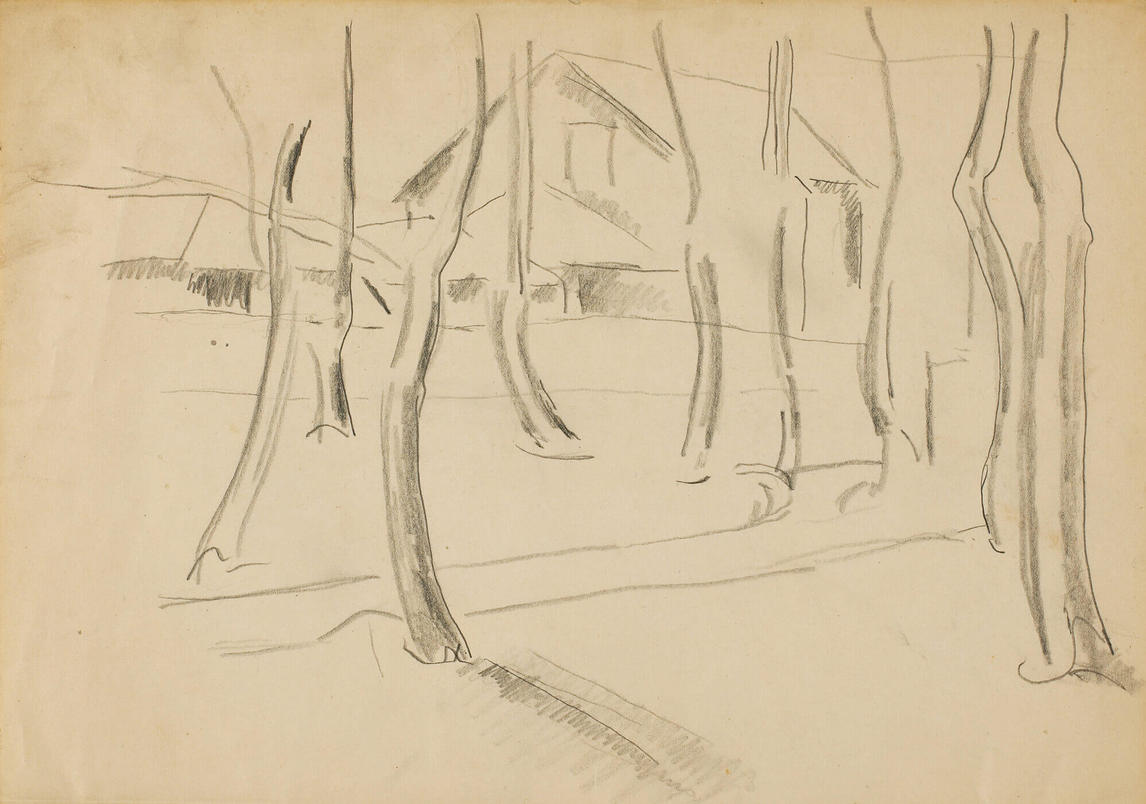
FitzGerald’s initial ideas for the painting were recorded in two small preliminary drawings. Sketch for “Doc Snyder’s House” No. 1, c. 1928, establishes the main elements of the composition—the large house seen against the rhythm of the foreground trees. Sketch for “Doc Snyder’s House” No. 2, 1928, maps the main volumes of the houses, lowering them in the picture behind the screen of trees. Next, FitzGerald made a detailed drawing on canvas. Since it was the middle of winter when he began to work on the painting outdoors, the temperature was often well below zero. His friend the art critic Robert Ayre noted: “The only concession FitzGerald made to the cold was to work within a shell, a small shack with a stove in it that he hauled about his yard on runners.”
FitzGerald creates a balanced composition from organic and geometric shapes that keep the eye moving in a circular motion. The range of hues is limited to blue and brown and no brush strokes are visible. Yet the colours are luminous and the light dazzling. With a deliberately restrained palette and brushwork, FitzGerald has transformed an ordinary house into something living and majestic. Likewise the rhythm of the trees suggests their life and growth even in winter. Transcending photographic verisimilitude, Doc Snyder’s House is as close as FitzGerald ever came to making the “picture a living thing, one great thought made up of many details but all subordinated to the whole.”

 About the Author
About the Author
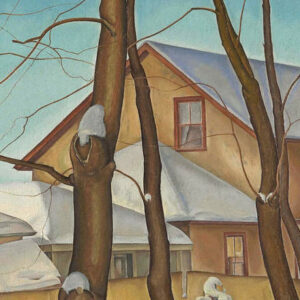 More Online Art Books
More Online Art Books
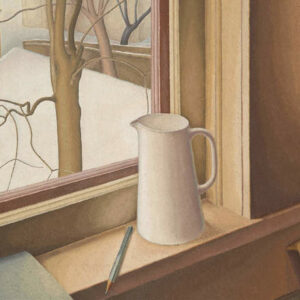 Acknowledgements
Acknowledgements